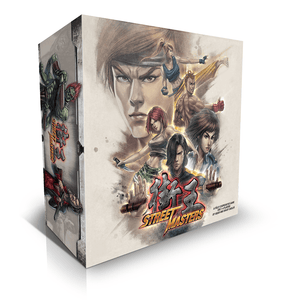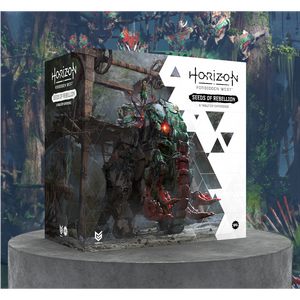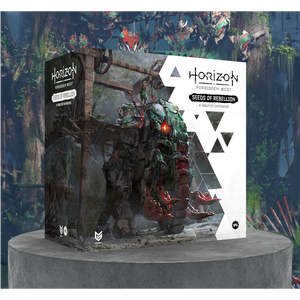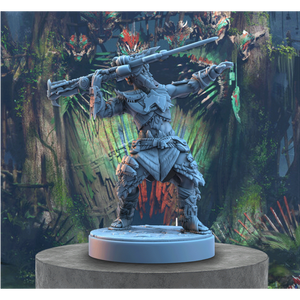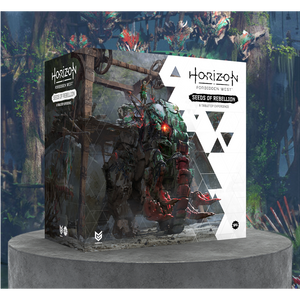Welcome back to the bonfire, Chosen Undead, and the next article in our series discussing the new core sets for DARK SOULS: The Board Game, Tomb of Giants and Painted World of Ariamis.
I’m delighted that you all enjoyed my previous article, discussing how encounters work in the new version of the rules. Following that, it sounds like a lot of you have questions, so I’ll do my best to answer them in this piece.
And, if you missed it, don’t worry, you can find the article here. It’s pretty essential reading for this one, so please do check it out before going any further!
If you did catch it, you may remember that, last time, I revealed the Last Rites card to better explain how individual encounters are structured. Before that, I briefly mentioned the campaign dashboard, to give a little context to what would follow — and in this article we’ll be discussing the dashboard, and the campaign in much more detail.
First Impressions
The focus of the original DARK SOULS: The Board Game was to recreate the intricacies of combat, and in particular spectacular boss fights.
The setting was a zoomed-in dungeon, featuring a handful of rooms leading up to a boss fight. Once you’d beaten that boss, you would reset the playing area and set up a new one, repeating the process — and if you defeated the second ‘main’ boss, you completed the game. Exploration was largely abstracted away, to streamline gameplay.
Our original intention was to create an experience you could play through in a single session, from start to finish. Although the game featured a campaign section, this essentially amounted to a list of bosses that could be canonically found in a particular location, using the aforementioned reset mechanic between each foe.
Community Input
When I began working on this project, one of my first instincts was to explore how the approach described above had resonated (or not) with the community that actually played the game. For those of you who don’t know me, or any of the games I’ve previously worked on, most of my experience — and, I’ll admit, preference — is in designing games that use campaign systems as a building block.
A lot of the feedback I saw expressed a desire for more fleshed out dungeon delving which would be more evocative of the video game experience. Additionally, people wanted to play as part of a series of linked games, and felt the existing system was lacking in flavour.
Adjacently to that, I’d also already heard firsthand from players at various shows that the game as presented was simply too long to play in a single session.
Part of the reason for this was that the most optimum way to play the game was to farm souls and treasure by using each spark available, before facing the boss. This created a natural grind cycle of players repeatedly playing linear encounters against the same enemies multiple times which, whilst reminiscent of the video game, drove too much fatigue over a single evening. By the time most groups arrived at the main boss, at least one player had checked out, and didn’t really care if the party defeated their foe or died trying.
When it came to the new ruleset, we’d already established our overriding objective was to not invalidate previous purchases. To that end, it was important that any rules curation didn’t affect any existing treasure, enemies, bosses, or characters, people might already own. Even so, I felt there was a definite opportunity to address both the lack of campaign play, and make the game experience more enjoyable.
So, with all of that in mind, I wanted to see if we could push the boundaries a little.
Campaign Structure
I’ll start with a blanket statement that the new DARK SOULS: The Board Game core sets are campaign experiences. Both are set in a specific location from the video game, and are designed to represent the journey through that location, as you overcome several foes and challenges until you reach a climactic final boss fight.
At the start of the campaign, you lay out a dashboard, which features the soul cache, bonfire, blacksmith, and firekeeper, and slots for their various card decks. It also tracks the NPC’s your party have met, and includes ten encounter slots, running from left to right along its bottom edge.
When you’re ready to get started, you move to the first encounter slot on the far left, and then draw from the corresponding encounter deck. As the campaign progresses, you’ll repeat this each time you advance into a new slot, slowly building out your path through the campaign over a series of increasingly difficult encounters.

Campaign Dashboard
As we’ve already discussed in the previous article, encounters have changed rather significantly. Each encounter card features a short description of the location you’re in, building thematic resonance and ensuring it doesn’t feel like an anonymous room of enemies. The objectives for the encounters are varied, leaning further into not only the flavour of the area, but also ensuring you aren’t simply repeating the same mission over and over.
And that’s before we factor in shortcuts, and the extra bonfire starting position once you’ve defeated the campaign’s mini-boss, both of which allow your party to circumnavigate early encounters, preventing the party from having to play those encounters multiple times.
But most crucially, the encounter system is intended to be played over several sessions. You can pause when it suits you, and return when you’re ready to go once more. At the end of each encounter, all of the tiles are packed away, meaning that there’s no requirement to leave the playing area set up.
Of course, the game wouldn’t feel like Dark Souls if there wasn’t a healthy tension between life and death, and we needed to be respectful of the original rules. If your party is overcome, or wants to level up, you’ll still return to the bonfire, and reset the encounters. For those of you that like the grind, it’s still there. The choice is absolutely yours!
How To Experience Your Existing Collection
Following our previous article, many of you asked how you’d be able to enjoy your existing content using the new core sets, which I’d like to address before signing off.
As I mentioned before, our early and overriding objective when revising the core rules was to not invalidate any of the existing DARK SOULS: The Board Game cards that our audience might already have in their collection, or may be planning to purchase at a later date.
To this end, although the new rules change the way the game is played when using the Tomb of Giants and Painted World of Ariamis core sets, they’ve been carefully designed to subtly revise and streamline existing mechanics, rather than overhaul them. This means that players can still enjoy their existing copies of the game using the amended game mechanics for blocking and dodging, stamina recovery, and so on, without needing new cards.
In addition, your existing characters and treasure can happily be ported over to the new core sets as suits you; simply add them to your campaign. This won’t imbalance or break anything; if anything, I encourage you to do so. Make the campaign your own!
The same is also true of boss miniatures, which can replace the mini-boss and boss encounters in either campaign. If you have a mega-boss you’d like to face at the end of the Tomb of Giants instead of Gravelord Nito? Simply play their existing boss fight when you reach the final encounter of the campaign.
Hopefully that helps — and if you have any further questions, we’ll be hosting a Q&A in the next few weeks, which we’ll let you know about here. And we hope to give you a look at gameplay in action soon, too.
Until next time, Chosen Undead.
DARK SOULS: The Board Game Tomb of Giants and / or Painted World of Ariamis will be available on the 8th of November 2022, but you can pre-order both sets right now: CLICK HERE.
Dark Souls™& ©Bandai Namco Entertainment Inc. / ©FromSoftware, Inc.

 Join us on Discord
Join us on Discord


